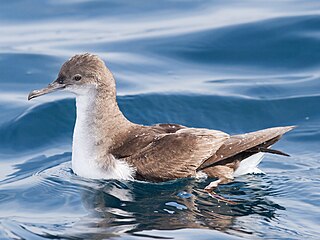 W
WPuffinus is a genus of seabirds in the order Procellariiformes. It comprises about 20 small to medium-sized shearwaters. Two other shearwater genera are named: Calonectris, which comprises three or four large shearwaters, and Ardenna with another seven species.
 W
WAudubon's shearwater is a common tropical seabird in the petrel family. Sometimes known as the dusky-backed shearwater, the specific epithet honours the French naturalist Félix Louis L'Herminier.
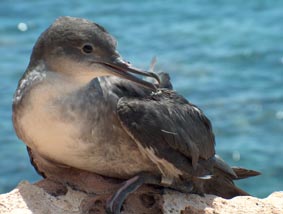 W
WThe Balearic shearwater is a medium-sized shearwater in the seabird family Procellariidae. Puffinus is a New Latin loanword based on the English "puffin" and its variants, that referred to the cured carcass of the fat nestling of the Manx shearwater, a former delicacy. The specific mauretanicus refers to Mauretania, an old name for an area of North Africa roughly corresponding to Morocco and Algeria.
 W
WThe Barolo shearwater, also known as the North Atlantic little shearwater or Macaronesian shearwater, is a small shearwater which breeds in the Azores and Canaries of Macaronesia in the North Atlantic Ocean. Puffinus is a New Latin loanword based on the English "puffin" and its variants, such as poffin, pophyn and puffing, that referred to the cured carcass of the fat nestling of the Manx shearwater, a former delicacy. The specific baroli refers to Carlo Tencredi Falletti, marquis of Barolo.
 W
WThe black-vented shearwater is a species of seabird. The bird is 30–38 cm in size, with a 76–89 cm wingspan. Formerly considered a subspecies of the Manx shearwater, its actual relationships are unresolved.
 W
WBoyd's shearwater, also known as the Cape Verde little shearwater, is a small shearwater which breeds in the Cape Verde archipelago of the Atlantic Ocean some 570 km off the coast of West Africa. The epithet commemorates British ornithologist Arnold Boyd.
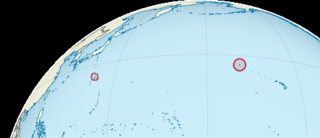 W
WBryan's shearwater is a species of shearwater that may occur around the Hawaiian Islands. It is the smallest species of shearwater and is black and white with a bluish gray beak and blue tarsi. First collected in 1963 and thought to be a little shearwater it was determined using DNA analysis to be distinct in 2011. It is rare and possibly threatened and there is little information on its breeding or non-breeding ranges. The species is named after Edwin Horace Bryan Jr. a former curator of the B. P. Bishop Museum at Honolulu.
 W
WThe Christmas shearwater is a medium-sized shearwater of the tropical Central Pacific. It is a poorly known species due to its remote nesting habits, and it has not been extensively studied at sea either.
 W
WThe dune shearwater, also known as the Canarian shearwater or Hole's shearwater, was a relatively large shearwater which bred in the Canary Islands archipelago of the North Atlantic Ocean. Fossils have also been found in the Figueira Brava cave archaeological site on the western coast of Portugal. The specific epithet honours Mrs Jean Hole who collected fossil material of the species on the Jandia Peninsula of Fuerteventura. It was intermediate in size between the Manx and Cory's shearwaters. Its breeding colonies were in dune fields, in contrast to those of the smaller and sympatric lava shearwater which bred in lava fields. Extinction of the species occurred about 2000–3000 years ago, contemporaneously with the first human settlement of the islands by the Guanches, with the cause likely to be human predation.
 W
WThe fluttering shearwater is a species of seabird in the family Procellariidae.
 W
WThe Galápagos shearwater is a small shearwater. Until recently it was considered to be a subspecies of Audubon's shearwater, but it is actually one of two members of a very ancient lineage of the small Puffinus species, the other being, as indicated by mtDNA cytochrome b sequence data, the Christmas shearwater.
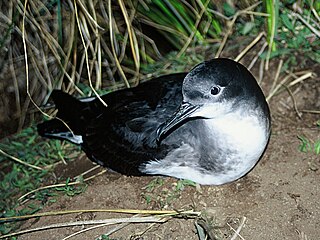 W
WHutton's shearwater or kaikoura tītī is a medium-sized ocean-going seabird in the family Procellariidae. Its range is Australian and New Zealand waters, but it breeds only in mainland New Zealand, in just two remaining alpine colonies in the Seaward Kaikoura Range. Because six other colonies have been wiped out by introduced pigs, a protected artificial colony has been established near the town of Kaikoura.
 W
WThe lava shearwater, or Olson's shearwater, was a species of shearwater that bred on Lanzarote and Fuerteventura in the Canary Islands. It is known from fossil remains, and was only described in 1990. It was intermediate in size between the Manx shearwater and the little shearwater. The remains of the species are particularly common in lava fields.
 W
WThe little shearwater is a small shearwater in the petrel family Procellariidae. Despite the generic name, it is unrelated to the puffins, which are auks, the only similarity being that they are both burrow-nesting seabirds.
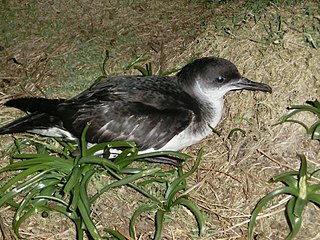 W
WThe Manx shearwater is a medium-sized shearwater in the seabird family Procellariidae. The scientific name of this species records a name shift: Manx shearwaters were called Manks puffins in the 17th century. Puffin is an Anglo-Norman word for the cured carcasses of nestling shearwaters. The Atlantic puffin acquired the name much later, possibly because of its similar nesting habits.
 W
WNewell's shearwater or Hawaiian shearwater (ʻaʻo), is a seabird in the family Procellariidae. It belongs to a confusing group of shearwaters which are difficult to identify and whose classification is controversial. It was formerly treated as a subspecies of the Manx shearwater and is now often placed in Townsend's shearwater. It is endemic to the Hawaiian Islands.
 W
WThe Persian shearwater is a seabird in the family Procellariidae formerly lumped in with Audubon's shearwater.
 W
WThe subantarctic shearwater is a small bird species which breeds in Tristan da Cunha, islands of the southern Indian Ocean and New Zealand Subantarctic Islands.
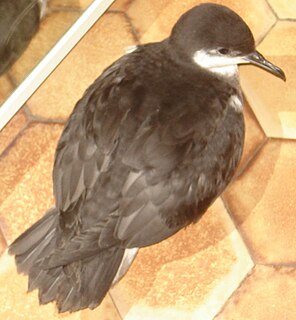 W
WThe tropical shearwater is a seabird in the family Procellariidae formerly considered conspecific with Audubon's shearwater.
 W
WThe yelkouan shearwater, Levantine shearwater or Mediterranean shearwater is a medium-sized shearwater in the seabird family Procellariidae.